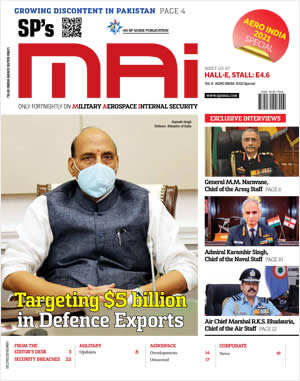INDIAN ARMED FORCES CHIEFS ON OUR RELENTLESS AND FOCUSED PUBLISHING EFFORTS
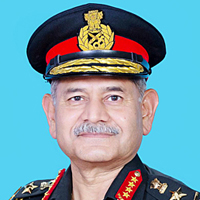
The insightful articles, inspiring narrations and analytical perspectives presented by the Editorial Team, establish an alluring connect with the reader. My compliments and best wishes to SP Guide Publications.
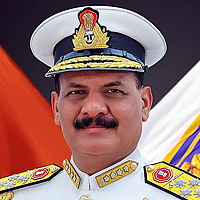
"Over the past 60 years, the growth of SP Guide Publications has mirrored the rising stature of Indian Navy. Its well-researched and informative magazines on Defence and Aerospace sector have served to shape an educated opinion of our military personnel, policy makers and the public alike. I wish SP's Publication team continued success, fair winds and following seas in all future endeavour!"

Since, its inception in 1964, SP Guide Publications has consistently demonstrated commitment to high-quality journalism in the aerospace and defence sectors, earning a well-deserved reputation as Asia's largest media house in this domain. I wish SP Guide Publications continued success in its pursuit of excellence.
- Prime Minister Modi Visits Punjab’s Adampur Air Base, Interacts with Airmen after Successful ‘Operation Sindoor’; Stern Message to Pakistan
- The layered Air Defence systems that worked superbly, the key element of Operation Sindoor
- Operation Sindoor | Day 2 DGMOs Briefing
- Operation Sindoor: India strikes back with Precision and Purpose
- Operation Sindoor: Resolute yet Restrained
- India’s Operation Sindoor Sends a Clear Message to Terror and the World – ‘ZERO TOLERANCE’
- Japan and India set forth a defence cooperation consultancy framework, talks on tank and jet engines
- Terrorist Attack in Pahalgam in Kashmir: Unfolding a long surgical war against PAK
- Lt General Pratik Sharma takes over Command of Indian Army's Northern Command
Fireside chat with Air Chief Marshal A.P. Singh – Airpower and the Next Fight
At Ran Samwad 2025, India's first tri-service seminar on the impact of technology on warfare, one of the most engaging moments came from a candid fireside chat with Air Chief Marshal A.P. Singh, Chief of the Air Staff, moderated by Lt. General Raj Shukla (Retd). His message was simple but powerful: Airpower will remain central to India's ability to shape, escalate, and conclude conflicts in the future.
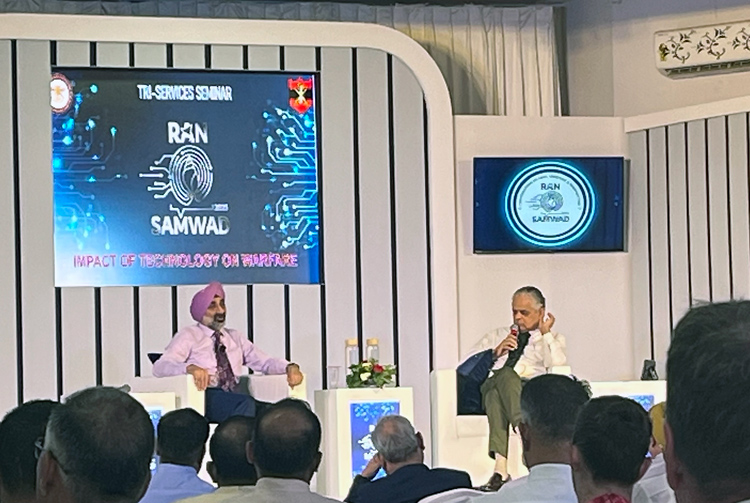
Air Chief underscored a central truth of modern conflict: airpower is no longer a supporting arm, but the principal instrument of escalation management and conflict termination. By placing airpower at the heart of India's recent combat experience, the Air Chief moved the discussion beyond platforms and into the realm of strategy — where speed, reach, and precision converge to give the political leadership credible options in war and limited war alike.
"Every country, whether the United States or China, develops its models of warfare based on unique requirements. India must chart its own course. Importing models won't work for us"
We must evolve our own model
Air Chief cautioned against blindly copying the structures of other nations. "Every country, whether the United States or China, develops its models of warfare based on unique requirements. India must chart its own course. Importing models won't work for us," he emphasised.
Airpower: Escalatory, Decisive, and Joint
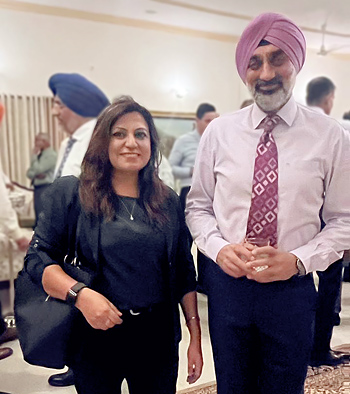
The Air Chief reminded the audience that globally, airpower has traditionally been the first responder in crises. But in India's case, it has often played the escalatory role — taking the fight to the adversary with decisive effect.
"We could reach the conclusion — the termination of operations — because we used airpower"
Referring to Operation Sindoor, he was unequivocal. "We could reach the conclusion — the termination of operations — because we used airpower. Jointmanship played a huge role, but it was airpower that gave us the ability to strike, shape outcomes, and end the conflict."
He recalled the intensity of that night. "We were on a song. We could have continued to strike, but that was not our aim. Our objective was achieved."
For the first time in decades, long-marked targets were successfully struck, validating the effectiveness of integrated planning and the decisive use of airpower. "The targets that had only been on maps for the last 44 years were struck for real in Operation Sindoor."
Beyond Drones: The Need for Self-Reliance in EW
While drones and unmanned systems dominated much of the discussion at Mhow, the Air Chief offered a reality check. "Just drones are not enough," he said, pointing instead to the need for next-generation weapons, jammers, electronic warfare systems, and precision strike capabilities.
"We cannot depend on others to fight our electromagnetic battles. We must own this space end-to-end."
He stressed that self-reliance in the entire electronic warfare (EW) cycle — from sensors to shooters — is critical.
Manned–Unmanned Teaming: The Future of Airpower
Dismissing fears of fully autonomous warfighting, Air Chief Marshal Singh reaffirmed that "man will always remain in the loop." The real challenge, he said, lies in manned–unmanned teaming — leveraging drones and autonomous systems to amplify the reach and lethality of manned platforms.
"The question is not man versus machine, but how 2+2 can become 5 when man and unmanned team together."
The Joint Imperative
For the Air Chief, the success of Operation Sindoor was also a demonstration of effective joint planning. "The CDS orchestrated the operation with the three service chiefs. There were no gaps in planning or execution — everything was sorted out. That's the model we need to institutionalise.
"A centralised Joint Planning and Coordination Centre in Delhi, under the CDS, would be the logical next step."
The Takeaway
Air Chief Marshal Singh's words at Ran Samwad were a reminder that the wars of tomorrow will not be won by numbers alone — but by speed, precision, and the ability to dominate the information and electromagnetic spectrum. India's airpower, backed by indigenous EW capabilities and embedded within a joint command structure, will remain the sword and shield of national security. In the words of the Air Chief, "Airpower must be used offensively in the wars of today and tomorrow. That is how we ensure outcomes on our terms."





